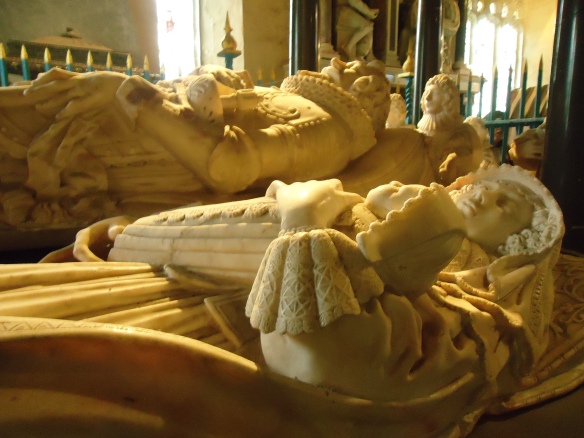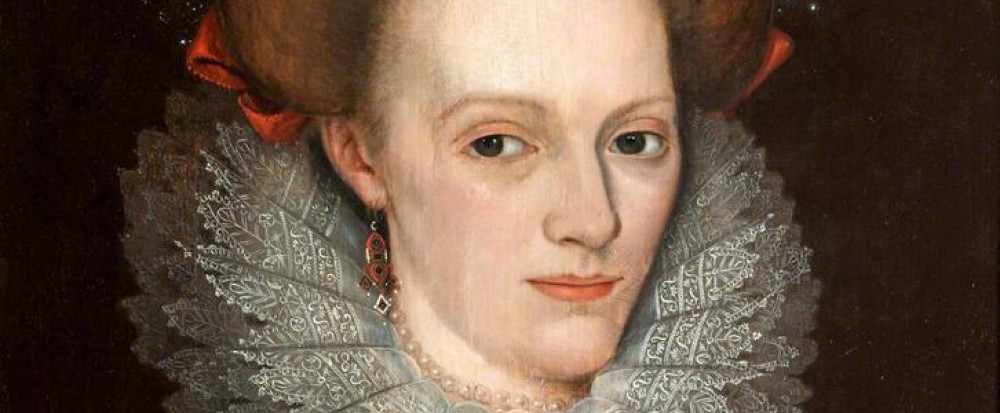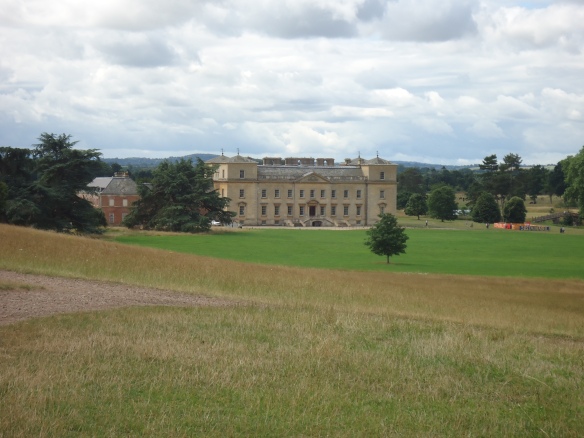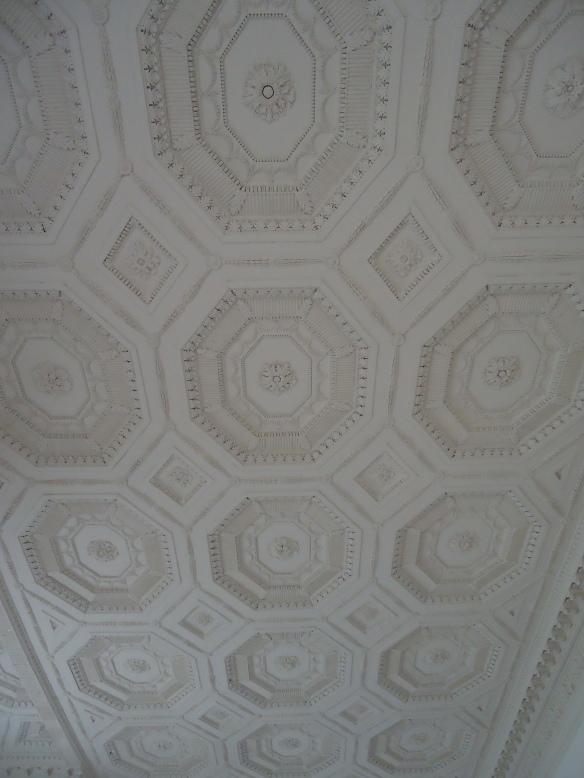When it comes to family tombs, St Mary’s, Lydiard Park has the daddy of them all.
The St John alabaster, black limestone and clunch ‘bedstead’ tomb, a monument to Anne Leighton, first wife of Sir John St John 1st Bart was commissioned by Sir John some thirteen years before his death. In style and quality the tomb has been compared to work by Nicholas Stone, a leading 17th century sculptor. It was made in London and transported to Lydiard Tregoze in sections where it was reassembled in St Mary’s Church.
During a recent visit to Croome Court I discovered a Coventry family tomb with similarities and a family connection to the St John one.
In 1751 George William 6th Earl of Coventry, inherited Croome Court and one of the first things he did was demolish the medieval church which he considered to be too close to the house for his grand design.
He did, however, strip the church of much of its interior masonry and timbers which were reused in the new build on the hill. He also transferred the bodies of a few ancestors and had them reinterred in a vault beneath the church. He re-installed some magnificent memorials in the new church of St Mary Magdalene, consecrated on June 29, 1763.
One of the memorials that moved up the hill was that of Mary Craven, the wife of Thomas Coventry, 2nd Baron Coventry of Aylesborough.
Mary was baptised at the Church of St Antholin in the City of London, on October 17,1602 the daughter of Sir William Craven and Elizabeth Whitmore and immediately we have a family connection to the St John memorial.
Mary’s mother Elizabeth Whitmore was the elder sister of Margaret Whitmore, second wife of Sir John St John, whose effigy lies on his right hand side.
And if you want another local connection, Mary Craven was the sister of Sir William Craven who built Ashdown House for Elizabeth of Bohemia and is the subject of Nicola Cornick’s time slip novel, House of Shadows.
Mary was a wealthy woman in her own right and a most suitable wife for the 2nd Baron. The couple were married at St Andrew Undershaft, (a church which now stands in the shadow of the ‘Gherkin’ in the City of London) on April 2, 1627. A son and heir, George Coventry 3rd Baron Coventry of Aylesborough was born in 1628 followed by a second son Thomas who later became the 1st Earl. Two daughters died in infancy and a third son, depicted on the monument in Mary’s arms, died at birth.
Mary died on October 18, 1634 ‘in her 29th year.’ She is depicted on the monument dressed in sumptuous bedclothes, reclining on a bed, a baby in her arms. Two children kneel at Mary’s feet, possibly her two sons, who would have been aged 6 and 5 at her death.
The Latin inscription on Mary’s monument translated reads:
In Memory of
That most illustrious Lady Maria, devoted wife of Thomas Coventry, eldest son of Thomas Baron Coventry of Allesborough, Lord Keeper of the Great Seal of England. A truly most admirable woman, upon whom God lavished beauty, and what is rarer in her sex, virtue, her loveliness surpassing any woman’s, her generosity surpassing any man’s, of unblemished reputation and purity of life, with a lively mind, strong judgment, an easy eloquence and pleasant speech, calmly in control of her feelings, and finally not just a wise but a calm mistress of all these gifts. A fertile mother of four children, she arrived at the last fatal confinement, bringing forth a son, against nature, rather to death than to life, so that even while trying to share out her life, she lost it, and herself yielded to fate, a short time after her child, amid general lamentation.
Anne Leighton also holds her last and 13th child in her arms on the St John monument, but we know this child, a son named Henry, lived to adulthood. Anne lies alongside her husband and his second wife Margaret Whitmore. At her head kneel Anne’s five surviving sons and at her feet her three surviving daughters. Two sons and two daughters who died young are depicted at the base of the monument.
The inscription reads:
Anne was the daughter of Thomas Leighton, Knight, by his wife Elizabeth of the Knowles family and of the kindred of Queen Elizabeth, as blessed in character as in connection. She lived for thirty seven years, endowed with noble gifts of mind, body, and manner, a rare example of virtue and piety; she was the mother of thirteen surviving children; in the end, long worn down by the painful agonies of her last confinement and at last overcome, she fled to heaven on the 19th September, 1638.
The date is incorrectly recorded and should read 1628.
The Coventry tomb is big and bold, but I have to say the St John one is more finely carved and superior, even with an error in the inscription. Well I would, wouldn’t I?

The Coventry monument

Mary Craven and child



The St John tomb


Margaret Whitmore, Mary Craven’s aunt







